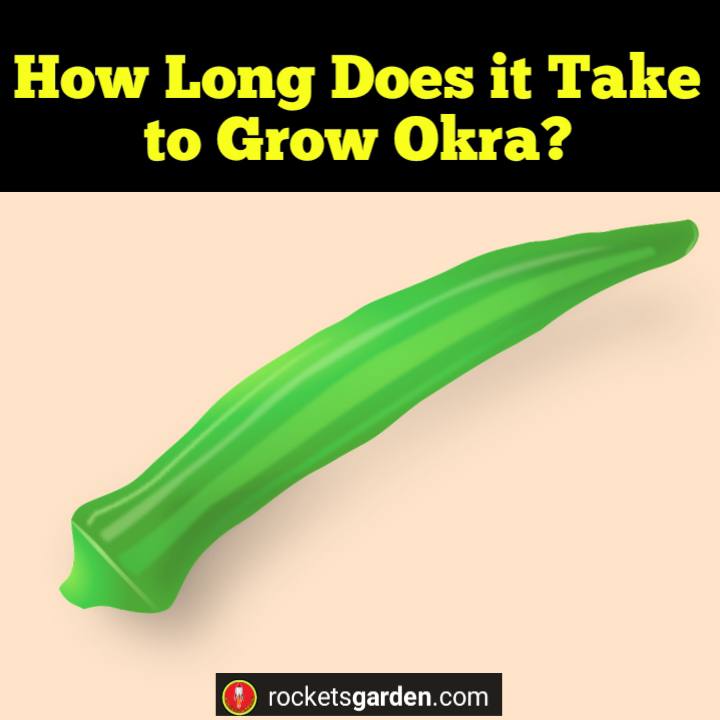
Okra is a warm-weather vegetable that is a popular choice for home gardeners and farmers alike. It is a versatile vegetable that can be used in a variety of dishes, including stews, soups, and stir-fries. If you’re thinking of growing okra in your garden, you might be wondering how long it takes for this plant to mature and produce edible pods.
How Long Does It Take For Okra To Germinate?
Okra seeds typically take between 5 to 10 days to germinate, depending on the temperature and moisture conditions. Warmer temperatures and consistent moisture levels can lead to faster germination rates.
Pre-soaking the seeds for 12-24 hours before planting can also help to speed up the process. Gardeners should keep in mind that if the soil temperature is too cool, below 60°F (15.5°C), germination may be delayed or not occur at all. It is important to wait until soil temperatures have warmed up before planting okra seeds to ensure successful germination.
How Long Does It Take For Okra To Grow To Maturity?
The time it takes for okra to grow to maturity depends on the variety and growing conditions. Generally, okra plants reach maturity in 50 to 65 days after germination. This is when the plants start to produce their first harvestable pods.
The more sunlight and warmth the plants receive, the faster they will grow and reach maturity. Okra plants can continue to produce pods throughout the growing season as long as they are regularly harvested and cared for, ensuring a continuous supply of fresh okra.
What Is The Average Growing Season For Okra?
The average growing season for okra is 3 to 4 months, which is typically during the warmest part of the year. Okra plants thrive in warm temperatures and require a long growing season to produce a bountiful harvest.
In most regions, planting okra after the last frost date in spring and continuing to harvest until the first frost in fall will provide an optimal growing season. In warmer climates with mild winters, it may be possible to grow okra throughout the year.
What Is The Ideal Temperature Range For Growing Okra?
The ideal temperature range for growing okra is between 70°F (21°C) and 90°F (32°C). Okra plants are sensitive to cold temperatures and will not grow well if the temperature consistently drops below 60°F (15.5°C).
Soil temperatures should be at least 65°F (18°C) when planting seeds to ensure proper germination. Okra plants thrive in full sun and will produce more pods when they receive at least 6 to 8 hours of sunlight per day.
How Much Water Does Okra Need To Grow?
Okra plants require consistent moisture to grow properly, with an ideal water requirement of about 1 to 1.5 inches (2.5 to 3.8 cm) per week. This can vary based on the weather and soil conditions. During hot and dry spells, more frequent watering may be necessary to maintain adequate soil moisture.
It is essential to water deeply and consistently, as shallow and irregular watering can lead to poor root development and reduced pod production. Drip irrigation or soaker hoses are ideal for maintaining consistent soil moisture without promoting diseases related to excessive moisture on plant leaves.
Can I Grow Okra In Containers?
Yes, okra can be grown in containers, making it an excellent choice for gardeners with limited space or those who want to grow plants on patios or balconies. Choose a container that is at least 12 inches (30 cm) deep and wide to accommodate the plant’s root system.
Use a high-quality potting mix to ensure proper drainage and provide adequate nutrients. Be mindful that container-grown okra plants will require more frequent watering and may need additional support, such as stakes or cages, as they grow taller.
How Often Should I Fertilize My Okra Plants?
Fertilizing okra plants depends on the soil fertility and the type of fertilizer used. Generally, a balanced, slow-release fertilizer applied at planting time will provide sufficient nutrients for the growing season.
Additional side-dressing witha nitrogen-rich fertilizer may be necessary 4 to 6 weeks after planting, especially if the plants are showing signs of slow growth or pale leaves. It is essential to avoid over-fertilizing, as this can lead to excessive leaf growth at the expense of pod production. Conducting a soil test before planting can help determine the specific nutrient requirements for your okra plants, ensuring optimal growth and productivity.
When Is The Best Time To Harvest Okra?
The best time to harvest okra is when the pods are young and tender, typically 3 to 5 inches (7.5 to 12.5 cm) in length, depending on the variety. Harvesting pods at this stage will ensure the best flavor and texture, as over-mature pods can become tough and fibrous.
Okra plants produce pods quickly, so it is essential to check them every day or two during the peak growing season. Harvesting pods regularly will also encourage the plants to continue producing more pods throughout the season.
How Long Does The Okra Plant Produce Pods?
Okra plants can continue to produce pods for an extended period, typically lasting 10 to 12 weeks, or even longer in ideal growing conditions. As long as the plants are well-cared for, they will continue to produce new pods throughout the growing season.
Regular harvesting of the pods will encourage the plant to produce more flowers and, subsequently, more pods. However, okra production will start to decline as temperatures cool in the fall or if the plants are affected by pests or diseases. Once production slows down significantly, it may be time to remove the plants and prepare the garden for the next crop or growing season.
